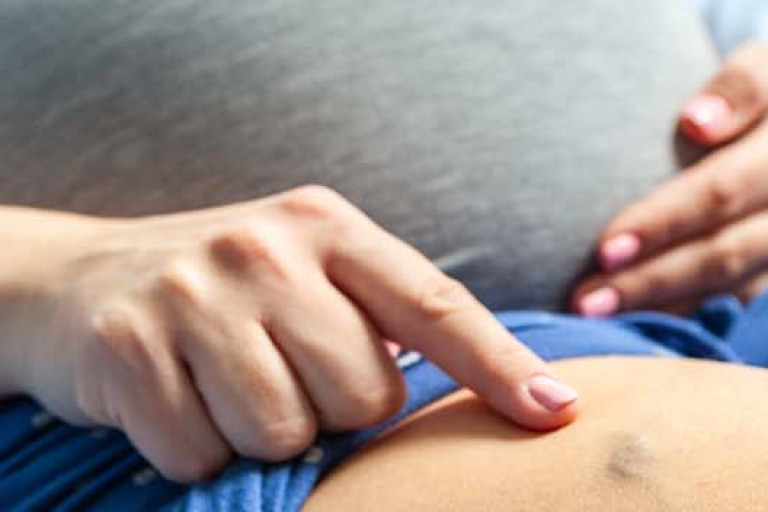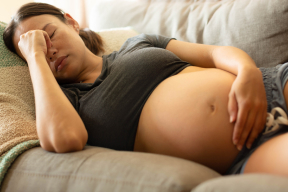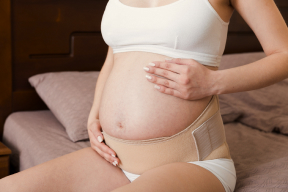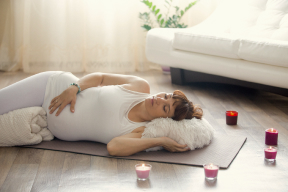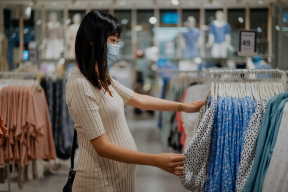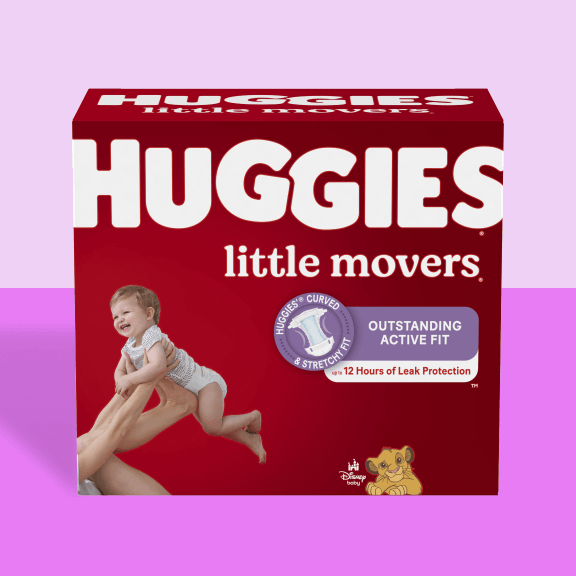What are varicose veins?
During pregnancy, varicose veins are most common in the third trimester. This is when the weight of the baby, the size of the uterus, and the mother's increase in circulating blood volume is at its highest.
What do varicose veins look like?
Varicose veins are generally a bluish or purple color and are lumpy or knobby. They appear like clusters of dilated, engorged veins. They are not always evenly distributed. Many people, including pregnant women, find that their varicose veins appear more on one leg than the other; or they are more visible in one portion of their legs than another. Often, a portion of one large vein can be seen tracking down the leg.
Varicose veins can be almost invisible when lying or sitting down. They can also seem to disappear when the legs are elevated, but on standing, they immediately appear. They are not always painful, and the only negative aspect may be their unattractiveness. Most women find that the larger their varicose veins, the more uncomfortable they become. There can be a sensation of heaviness, aching, throbbing, or general pain from varicose veins.
What are the risks of varicose veins?
What causes varicose veins?
During pregnancy ,the enlarging uterus presses down on the major blood vessels in a mother's pelvis. These veins are primary arteries which feed back to the heart and lungs and are vital for the mother's life. These blood vessels also need to accommodate a significant increase in overall blood volume while pregnant.
Because of the uterine weight and size, there is not a free return of blood to the major organs and a backlog of blood forces blood to pool in the smaller blood vessels of the mother's groin and legs.
Another contributing factor is that pregnancy hormones allow the blood vessels to become more dilated and less resistant to blood flow. This is to help deal with the extra blood volume—up to 30% more than when not pregnant—and to maintain a mother's blood pressure at a safe level. The relaxation of the vessels also means that the usual efficiencies and resistance of the veins and valves are not in place.
Varicose veins can also occur in and around the vulva. These are particularly uncomfortable, especially at the end of a long day of standing up or running around. They can also appear after intercourse. Cool washcloths, supportive underwear, and lying down to rest can all help.
In the majority of women, vulvar varicose veins resolve after their baby is born. If they are particularly bad during pregnancy, a mother may be advised by her healthcare provider to avoid having an episiotomy when the baby is born. This is because there can be an increased risk of bleeding if a vulvar varicosity is cut.
The consensus is that it is better for there to be a controlled birth and a mother's perineum be allowed stretch and tear a little, rather than be surgically cut.
What can I do to prevent varicose veins in pregnancy?
Biology is not destiny and there are a number of things you can do to reduce the likelihood that you will also have varicosities.
- Avoid gaining too much weight. Ideally, pregnancy weight gain should be within 25 to 30 pounds or based on a healthly Basal Metabolic Index (BMI).
- Buy some good, supportive pantyhose. Price really is an indicator of quality when it comes to support hose, so check the strength and ratio of Lycra to nylon. This will give you a clearer idea of support characteristics.
- Consider wearing support underpants. If they are too tight, you'll be uncomfortable, though, and they will create compression in your groin area.
- You may need to wear compression stockings to provide a higher degree of support. Check with your maternity care provider first to make sure these are right for you.
- Rest with your feet up. Where possible, elevate your legs and feet so they are off the ground. At the end of a long day, lie flat on your bed or the floor and position your legs upright on the wall. This will help the blood to drain from your legs. Just don’t get up too quickly; a temporary drop in blood pressure called postural hypotension is common when going from a lying to standing.
- Sleep with your legs slightly elevated. You could try positioning a pillow or cushion underneath the bottom sheet. Just be careful not to put a pillow behind your knees.
- Avoid wearing high-heeled shoes. These interfere with the correct movement of the calf muscles and functioning of the larger veins.
- Aim to exercise every day. Avoid hard, repetitive stepping type exercises. Instead investigate pregnancy yoga, aqua aerobics, and Pilates.
- When you are walking, try to pick up the pace and walk briskly. Doing this will activate the large muscles in your legs which will help to divert blood back up through your groin to your heart.
- Avoid crossing your legs when you are sitting. This interferes with blood flow, especially behind the knees.
- Avoid standing in one spot for long periods of time. Instead, shift your body weight around by distributing weight from one leg to the other. Look for reasons to move.
- Drink plenty of fluid and keep your circulating blood volume at a healthy level. Avoid becoming dehydrated. Thirst is a symptom of early dehydration so keep your water bottle handy.
How can I treat varicose veins in pregnancy?
Symptoms of varicose veins generally improve in the first few weeks after the baby is born. For some women, varicose veins that develop during their pregnancy are permanent. Similarly, spider veins can remain.
There is no point in having them treated if you have not finished having your family. Varicose veins tend to become worse with each subsequent pregnancy and appear earlier in each gestation. Even if you don’t have them between pregnancies, once those pregnancy hormones start up again, you may find those old friends reappear.
If you do decide to have your varicose veins treated there are several options open to you. You will need to see a doctor who specializes in veins known as a vascular surgeon. They will be able to advise you on the best treatment options. You may need to have them stripped which require a general anesthetic or, injected with a chemical agent to close the veins. Alternately, laser therapy may be an option for you. This is only done on smaller surface-type veins which do not carry such a large blood flow.
Spider veins and pregnancy
Spider veins are commonly seen on the face of pregnant women and tend to be more visible in fair, Caucasian women. Across the cheeks, on the nose, on the chin and across the forehead are common areas for spider veins to appear. They can also appear in the sclera—the white portion of the eye. They can appear on the legs, upper chest, neck, arms, and torso.
Spider veins are common both during pregnancy and after birth. The intense force of pushing out her baby can cause a mother to develop spider veins in her face and neck. These tend to disappear within a week or so. If they don’t, then checking with a dermatologist may be helpful to discuss treatment options.
What causes spider veins?
What can I do to prevent spider veins in pregnancy?
- Try to avoid extremes of hot and cold.
- Aim for showers which are comfortably warm and not too hot.
- When washing your face use a gentle, indirect shower spray rather than a forceful jet.
- Avoid using facial scrubs, exfoliants, and steaming your face.
- If you have a facial, let the aesthetician know you are pregnant. Your skin may be more sensitive to the usual products they use.
- After showering, use a soft towel to dry your face. Line- or sun-dried towels can be too abrasive and coarse, so consider using a dryer.
- Avoid exposure to direct sunlight. Wear a hat and use a broad-spectrum and low- allergenic sunscreen.
- Drink plenty of water and ensure your skin is well-hydrated.
- Try not to ingest too much caffeine. This is found in tea and coffee, chocolate, and energy drinks.
- Be kind to your skin. Avoid using harsh washes, brushes, and abrasive cloths.
- Increase your dietary intake of vitamin C. This is an excellent nutrient for cellular recovery and repair. It will also help to strengthen your veins and capillaries.
- Avoid eating spicy or hot food. Some women find that chili, paprika and or garlic exacerbate the appearance of their spider veins. Coffee and caffeine will do the same thing.
- If you are developing spider veins in your legs, consider wearing support hose.
Treatment for spider veins
Dermatologists specialize in skin assessment and treatments. If you are breastfeeding, you may want to wait to discuss treatment for spider veins with your dermatologist until after you have stopped. Breastfeeding hormones can exacerbate some skin conditions. Laser therapy can be very effective for spider veins and there are a range of different laser treatments now available.
The information of this article has been reviewed by nursing experts of the Association of Women’s Health, Obstetric, & Neonatal Nurses (AWHONN). The content should not substitute medical advice from your personal healthcare provider. Please consult your healthcare provider for recommendations/diagnosis or treatment. For more advice from AWHONN nurses, visit Healthy Mom&Baby at health4mom.org.
